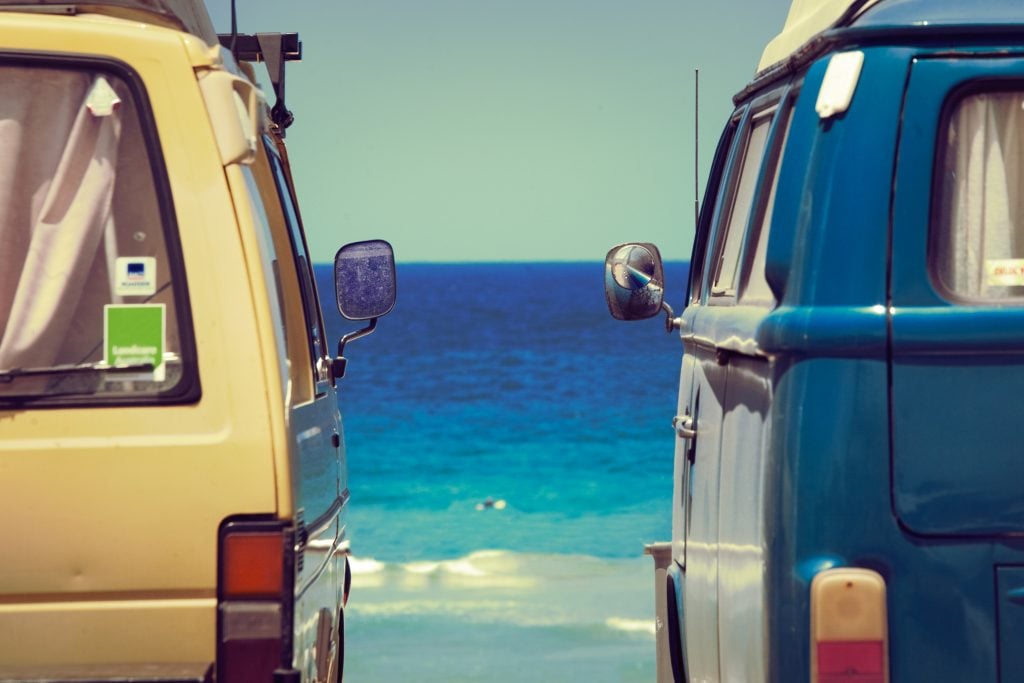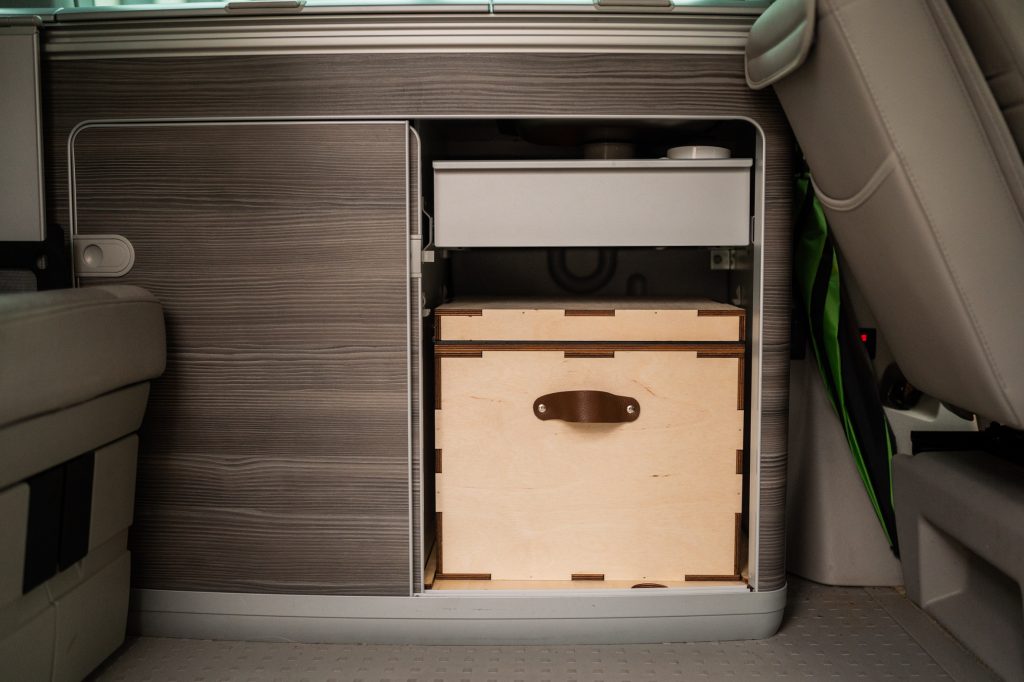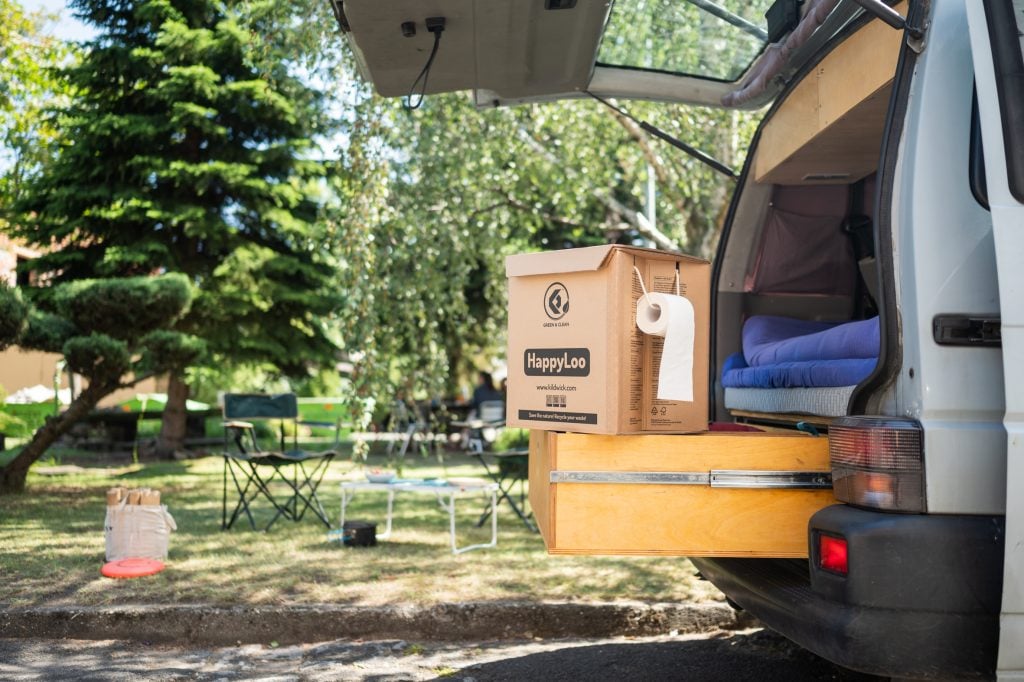
Can Van Life Be Eco Friendly? Yes!
The popularity of van life has skyrocketed during the pandemic. More and more travelers have (re)discovered the joys of camping, van trips and such.
With more and more individuals planning their weekend trips or holiday in a mobile home, many are wondering if there might be ways of making this experience more sustainable. So, how can you green up your van life?
1. Your sustainable van life starts at the gas station
Well, sort of. We thought we’d start off by saying hi to the elephant in the room. So there it is, your beautiful vehicle. Your beautiful, fossil fuel powered vehicle. Obviously, no alternative to the good old combustion engine exists yet. Hence, the best (and the only) earth-friendly decision here will be: strategize the heck out of your journey.
The rule of thumb for fuel-efficient driving is, and has always been, going at a slower pace. Every vehicle has a sweet spot where it consumes slightly less. By planning ahead, you have a chance of avoiding crowded routes or traffic jams, those notorious fuel killers, and drive at a steady pace with no to less stop-and-go. You’ll save on fuel, and you’ll also save money.
Pro tip: Two more (avertible) fuel eaters are flat tires and heavy load.
And finally, what helps in reducing your travel footprint even more is just generally driving less and staying longer at each destination. Checking out filling stations in advance is another smart move (pun intended). Again, this is something you can take care of way before hitting the road.
2. Be considerate to the environment and other travelers
In his 10 Commandments for Campers and Vanlifers, German vanlifer, blogger and podcaster Mogli has put together ten great, comprehensive principles to make camping a well-rounded, sustainable and environmentally-friendly experience:
- Only camp in designated camping areas.
- Always leave your campsite cleaner than you found it.
- Respect those around you.
- Respect nature.
- Don’t throw toilet paper or empty your waste water in the natural surroundings.
- Only start an open fire at designated fire areas – be aware of forest fires.
- If a parking is fully occupied, find another place.
- Be nice and positive, don’t judge those around you.
- Watch your dog and pick up after it.
- Explore the small and secluded campsites and protect them from mass tourism.
#CampWithManners is the hashtag for the 10 Commandments campaign on social media. Vanlifers will also want #vanlifers.
3. Have a sustainable camper van toilet installed
This one follows the Commandments – because it is considerate to keep the environment clean when it comes to human waste. However, you might have objections to having a toilet in your vehicle. You might fear the smell, you might dread the maintenance and the emptying, and you might hate to give up (sparse) space to store it.
But the benefits outweigh the downsides, that is, if you choose wisely. The pros of adding a toilet to your van life are:
- Cleanliness – Some public restrooms are just nasty.
- Convenience – Going to the bathroom is no more a “going behind the bushes“ moment.
- Independence – You are literally free to use it as you need to.

Vanlifers love the Kildwick Microloo – Photo: Kildwick
Also, modern dry toilets— also known as source separation or composting toilets— reduce the smell by containing the liquids and the solids in designated containers each. The solids are dried up using a handful of cover-up material (that comes in 100 % sustainable quality), which lessens the smell even more.
They also come in all sizes to fit into the smallest places. For example, the Kildwick MicroLoo model measures 337 mm x 337 mm x 384 mm and will even fit into a Volkswagen California T5/T6.
For those vanlifers who are not sure if they can commit to a modern composting toilet yet, the company offers the handy, comfy, and foldable HappyLoo toilet made of super-solid cardboard, originally designed for short trips or festivals. It’s an affordable one and a perfect introduction to sustainability.
4. Low waste and zero waste
The logic behind this one is simple: less waste means less load, less scouting for collecting points, and less literally wasted space. And zero waste isn’t about heavy mason jars either. Reusable items or items that don’t require any throw-away parts can be cool and actually fun to use, for example:
- Reusable wax wraps instead of cling wrap
- Fabric towels—or sponges—instead of paper towels
- Stainless-steel coffee filters, storage boxes, or coffee mugs
- Stainless-steel, or cork, or bamboo kitchenware, straws, cutlery, etc.
Bonus points: these items are all lightweight, nearly unbreakable, easy to clean – and not plastic.
5. Skincare and cleaning: Solid & multi-use
Thanks to the popularity of green and clean beauty, we’ve seen a massive rise in water-free and multi-use products for personal hygiene and home cleaning.
These can save so much place, time, and waste—from solid toothpaste to a shaving/shower powder, the market offers a plethora of sustainable options.
Now we’d like to hear from you – how do you make your van life and camping more sustainable? Let us know in the comment section below. For more tips on van life, head over to Vanlifers.com.


“Watch and pickup after your dog” NO!! LEASH and pickup after your dog, be respectful of others KEEP YOUR DOG LEASHED!
Sustainable or green products are not necessarily healthy options nor are they often times even affordable for the vanlifer.
Use vinegar snd water to clean. Make your own soap from lye, fat like lard or coconut oil, there are lots of recipes and how too on YouTube.
Make your own tooth paste with apple cider vinegar and activated charcoal or bentonite clay and a little coconut oil and peppermint oil. Same for deodorant use ACV and bentonite clay mix into a paste and apply with fingers. No chemicals and draws out toxic poisons through your skin.
Shop at local end of lane way farm stands for the freshest produce and meat/dairy.
Most green products require a huge amount of fossil fuels to make and often are not very effective or even healthy for you. Make your own and author your own life.
Finally stay on top of maintenance. Don’t let little things become big fixes. Check junk yards for parts and Craig’s lust or Kijiji for parts or Facebook market place.
Lots of ways to save money and reduce your costs and impact on the environment.
I looked up the Kildwick MicroLoo and checked the prices. I did not check what they would cost in US dollars, but they are expensive. There are free on-line plans to make similar, and if you are really cheap, you can make one for under $12. If you want to spend money, you can get a bit fancy, I am designing a throne right now, with a composting bucket, and unless wood prices go way up, I will have less than $100 invested, and hope can keep it down to about $50, even less if I can get some used lumber.
One of my mottos: Why buy it if you can make it.